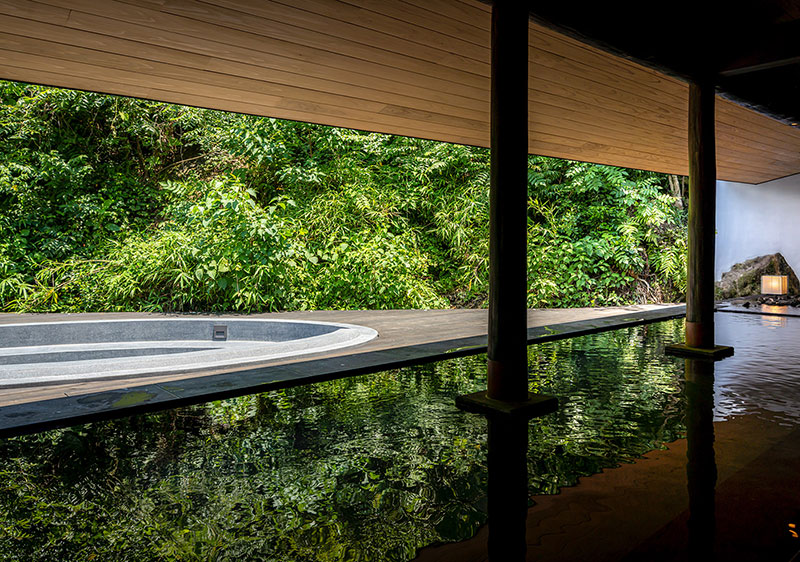History of Takeo Onsen
Takeo Onsen, known for its clear, soft water, is mentioned in the 1300-year-old "Hizen Fudoki" as: “There is a rock with hot springs to the west of the district…”. According to tradition, even Empress Jingū once bathed here.
During the Bunroku and Keichō campaigns, many soldiers gathered at Nagoya Castle visited Takeo Onsen. Toyotomi Hideyoshi issued a stamped notice, “Bathing Etiquette,” instructing soldiers to avoid disturbing other bathers.
In the Edo period, Takeo prospered as a post town along the Nagasaki Kaidō. Historical figures such as Miyamoto Musashi, Siebold, Date Masamune, and Inō Tadataka are recorded to have bathed here. The onsen is a mildly alkaline simple hot spring with well-balanced minerals, providing excellent heat retention and skin-beautifying effects.
















 Women's Indoor and Open-Air Bath
Women's Indoor and Open-Air Bath Women's Indoor and Open-Air Bath
Women's Indoor and Open-Air Bath


 Herbal Steam Sauna
Herbal Steam Sauna





 Refreshing rooftop rest area
Refreshing rooftop rest area

